October 7, 2025
Performance and dependability are crucial when your space’s cooling system depends on a chiller. However, mechanical parts wear down with years of use, which can result in breakdowns, increased energy expenses, and decreased efficiency. At that point, a chiller overhaul is necessary.
In this article, we’ll explain what is chiller overhaul, how it’s performed, when it’s needed, and why it’s vital for industrial and commercial HVAC systems in the UAE.
What Is Chiller Overhaul?
The process of disassembling, examining, cleaning, and reassembling a chiller unit’s mechanical and electrical parts to like-new working condition is known as a chiller overhaul. Usually carried out every five to ten years, depending on usage and operating conditions, it is more thorough than routine maintenance.
The main goal is to:
- Restore system efficiency
- Prevent unscheduled downtime
- Extend the chiller’s service life
According to Wikipedia, chillers are complex refrigeration systems that remove heat from liquids via vapor-compression or absorption cycles. Overhauling ensures that these cycles function efficiently without mechanical or thermal losses.
When Is a Chiller Overhaul Required?
Over time, a number of indicators point to the necessity of an overhaul:
- Decreased cooling capacity or uneven temperature regulation
- Frequent compressor faults or vibration issues
- Higher-than-normal power consumption
- Oil contamination or leakage
- Excessive noise or reduced refrigerant pressure
If you observe these issues, consult certified HVAC professionals like BestAir Services to evaluate your system’s health and schedule a chiller inspection before damage escalates.
Steps Involved in a Chiller Overhaul
A thorough chiller overhaul procedure follows several key stages to ensure each part is inspected and restored properly.
1. System Shutdown and Preparation
The unit is isolated from the system, power is disconnected, and refrigerant is safely recovered and stored per environmental regulations.
2. Disassembly of Key Components
Technicians dismantle the compressor, oil separator, heat exchangers, and expansion valves for internal inspection.
3. Cleaning and Inspection
Each component is cleaned of oil sludge, scale, and corrosion deposits. Visual inspection identifies cracks, wear, and corrosion.
4. Replacement of Worn Parts
Critical components such as bearings, gaskets, seals, and motor windings are replaced. In some cases, impellers or compressor shafts are machined or rebalanced.
5. Reassembly and System Recharging
After reassembly, the refrigerant is reintroduced, and technicians perform leak tests and vacuum tests to ensure tightness.
6. Performance Testing and Calibration
The system undergoes operational checks to verify pressures, temperatures, vibration levels, and overall performance against manufacturer specifications.
7. Documentation and Maintenance Scheduling
A final chiller maintenance report outlines all performed actions and future maintenance schedules to ensure continuous reliability.
Why Chiller Overhaul Matters for Industrial Systems
Commercial buildings, manufacturing facilities, and industrial facilities all use chillers that must withstand high loads. Ignoring an overhaul can result in:
- 30–40% increased energy use as a result of inefficiencies
- Failure of the compressor, the chiller’s most costly component
- Downtime in production, particularly in sectors like pharmaceuticals and food processing
According to ASHRAE standards (American Society of Heating, Refrigerating and Air-Conditioning Engineers), timely overhauls significantly improve system COP (Coefficient of Performance) and reduce energy costs.
Air Cooled vs. Water Cooled Chiller Overhaul
Both types of chillers require overhaul, but the process varies slightly:
| Type | Key Overhaul Focus | Typical Maintenance Interval |
|---|---|---|
| Air Cooled Chiller | Fan motors, condenser coils, and compressors | Every 5–7 years |
| Water Cooled Chiller | Tube cleaning, cooling tower inspection, and pump systems | Every 7–10 years |
Learn more about these systems from bestair chiller systems.
Benefits of Regular Chiller Overhaul
- ✅ Enhanced Efficiency: Restores lost cooling capacity and optimizes performance.
- ✅ Extended Equipment Life: Prevents premature failure and extends operational lifespan.
- ✅ Lower Operational Costs: Reduces electricity consumption and repair costs.
- ✅ Improved Reliability: Minimizes downtime and improves process stability.
- ✅ Regulatory Compliance: Meets health and safety regulations for energy systems.
Conclusion
Understanding what is chiller overhaul helps businesses make smarter decisions about equipment reliability and energy performance. It’s not just maintenance, it’s a vital investment in long-term operational efficiency.
At BestAir Services, we perform comprehensive chiller overhauls, air cooled and water cooled chiller maintenance, and HVAC solutions across the UAE, helping commercial and industrial clients minimize downtime and maximize energy savings.
Typically, 3 to 7 days, depending on the chiller type, capacity, and condition.
Generally every 5–10 years, or after 40,000–60,000 operating hours.
Maintenance involves routine inspections and cleaning, while an overhaul is a complete teardown and restoration of internal components.
Yes — a properly overhauled chiller can recover 10–25% energy efficiency, lowering overall utility costs.


